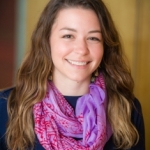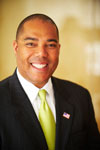
David Pankratz
What do musical chairs, speed dating, and crowd sourcing have to do with arts research? Well, on Day 2 of Americans for the Arts’ National Convention in June, co-hosted by the Greater Pittsburgh Arts Council (GPAC), Randy Cohen, AFTA’s Vice-President for Research and Policy, and I, found out.
Context: We knew that arts researchers and policy wonks from arts service organizations, academia, consultancies, and foundations would be among the 1,000 convention attendees coming to Pittsburgh. Randy and I also knew that opportunities for researchers and wonks (and geeks, too!) to gather in one place and explore issues connecting research, policy, and advocacy were, at best, rare. So we invited 40 such folks to do just that!
Format: In the lobby of Bricolage, a small, progressive theater in Pittsburgh’s Cultural District, four groups of 10 chairs each were divided by topic--Producing Arts Research, Evaluating Policies, Disseminating Research, and Leveraging Research for Advocacy. As participants arrived at 8:00 am, they scoured the room and chose, on a first-come, first-served basis, which group to sit in (the Musical Chairs portion of the program). Each participant then engaged in five animated, 5-minute conversations with others in their group (i.e., Speed Dating). According to Randy’s phone, the decibel level in the room rivaled that of a rowdy night club. Leaders of each group then shared highlights of those conversations with all the convening’s participants (Crowd Sourcing).
Read More






 Nina Ozlu Tunceli
Nina Ozlu Tunceli

 Matt D'Arrigo
Matt D'Arrigo


 Kate McClanahan
Kate McClanahan

 Heather Ikemire
Heather Ikemire

 Jeff Poulin
Jeff Poulin

 Cameron Russell
Cameron Russell


































